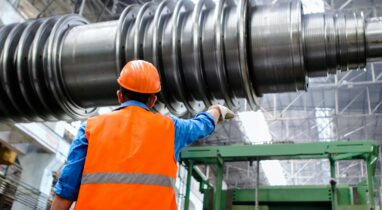Alberta is facing fierce competition in the global race for low-carbon investment. A low-cost, low-risk financial instrument called a carbon contract for difference could help Alberta incentivize new investment in low-carbon technologies, like carbon capture for hydrogen production, natural-gas power plants, and cement factories.
An alternative approach that relies heavily on subsidies could cost billions of additional dollars.
These are some findings from new economic modelling released today by Clean Prosperity and The Transition Accelerator, in a working paper called The Low-Carbon Playbook: Policies to foster Alberta’s competitiveness in a decarbonizing world.
This paper was updated in January 2024 to incorporate the new Alberta Carbon Capture Incentive Program (ACCIP) into the modelling and analysis. Policy recommendations have been updated in response to ACCIP, as well as the 2023 Fall Economic Statement.
“The global race for low-carbon investment is on. Alberta has everything it needs to compete in this new environment and become a diversified energy powerhouse,” said Adam Sweet, Clean Prosperity’s Director for Western Canada and co-author of the new paper.
“But Alberta urgently needs targeted strategies to support our carbon credit markets, like carbon contracts for difference, to compete against massive subsidies pulling capital and talent down to the US. We can win this race, if we make the right moves, right away.”
The Low-Carbon Playbook compares policy-based incentives between Alberta and US states for investment in nine low-carbon technologies, and proposes options to close the incentive gaps that Alberta faces as a result of generous subsidies in the US Inflation Reduction Act introduced last year.
Alberta urgently needs targeted strategies to support our carbon credit markets, like carbon contracts for difference, to compete against massive subsidies pulling capital and talent down to the US.
Adam Sweet, Clean Prosperity’s Director for Western Canada
Offering competitive incentives for more than a handful of large-scale low-carbon projects could cost billions of dollars. For example, the paper finds that fully matching the US Inflation Reduction Act’s incentives for a new 900 MW natural-gas combined cycle power plant equipped with carbon capture could cost the province $544 million over 10 years.
On the other hand, carbon contracts for difference (CCfDs) could drive investment at a much lower cost. CCfDs would guarantee the future value of carbon credits generated under Alberta’s TIER industrial carbon-pricing system, giving companies a dependable stream of future revenue, and the confidence to make big decarbonization investments.
The federal government announced plans to start offering CCfDs in its 2023 budget, but progress has been slow. Alberta should advocate for the federal government to quickly implement a CCfD program applicable to the province, and be ready to partner on such a program. As a contingency, the provincial government should also begin developing its own CCfDs.
Now is the perfect time to maximize TIER’s potential to attract investment. The working paper proposes additional measures that the Alberta government can take to advance this goal.
For more information: media@cleanprosperity.ca




